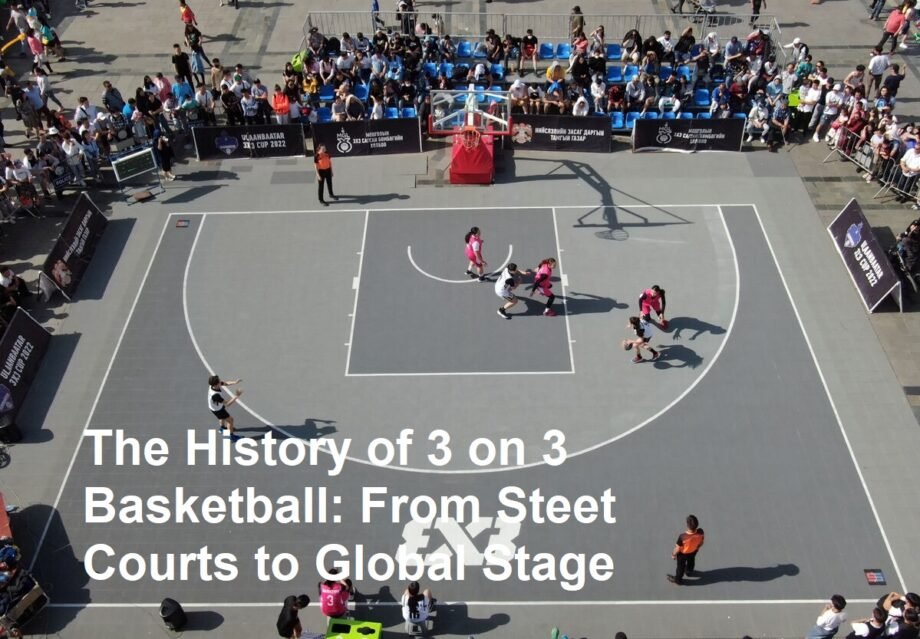Introduction
3 on 3 basketball, also known as 3×3 or triple-threat basketball, has rapidly grown from a casual street game to a globally recognized competitive sport. Understanding the complete history of 3 on 3 basketball provides fascinating insights into how this fast-paced, dynamic version of basketball evolved, its rules, and its rise to Olympics inclusion.
Origins of 3 on 3 Basketball: A Street Culture Classic
3 on 3 basketball originated as a street basketball variation played informally in neighborhoods, schoolyards, and playgrounds. Unlike the standard 5-on-5 game, this format requires only half a court and fewer players, making it accessible and spontaneous. The game emphasized speed, agility, and skillful ball handling — traits that appealed widely to urban youth and basketball enthusiasts.
Its informal nature allowed communities around the world to adopt and adapt the game easily. Over time, this grassroots popularity laid the foundation for organized competitions.
Formalization and Global Spread
The transformation of 3 on 3 basketball into an official sport began in the late 20th century. Recognizing its potential, the International Basketball Federation (FIBA) officially endorsed 3×3 basketball in 2007, launching the first FIBA 3×3 World Championships. This marked a significant turning point from informal play to structured competition.
FIBA established standardized rules and a formal format for tournaments, including a 12-second shot clock, a 10-minute game duration, and scoring rules that differentiate it from traditional basketball. This regulation helped 3×3 basketball gain legitimacy and uniformity across countries, fueling international tournaments and leagues.
Rise to Olympic Status
A major milestone in the history of 3 on 3 basketball was its inclusion in the Tokyo 2020 Olympics (held in 2021 due to the pandemic). This marked the first time 3×3 basketball competed on the Olympic stage, highlighting its acceptance as a serious, competitive sport.
Olympic inclusion elevated visibility, sponsorship, and investment, increasing participation worldwide. Today, national teams and professional players compete in international events under FIBA’s global governance, combining athletic prowess with entertainment value.
Unique Features That Set 3 on 3 Basketball Apart
3 on 3 basketball is distinct in its format and gameplay:
- Half-court play:Games are played on a half-court with one basket, speeding up play.
- Smaller teams:Only three players per team, leading to more frequent ball touches and individual plays.
- Shorter duration:Games last 10 minutes or until a team scores 21 points, making matches intense and fast-paced.
- Innovative scoring:Shots inside the arc count as one point; beyond the arc is two points, simplifying scoring compared to 5-on-5 basketball.
These features appeal to fans looking for exciting, quick action and have helped drive the sport’s explosive popularity.
Modern Competitions and Leagues
Building on its Olympic success, 3×3 basketball enjoys a thriving ecosystem of competitions, including:
- FIBA 3×3 World Tour
- Continental championships
- National 3×3 leagues (e.g., USA’s BIG3 league)
- Youth and amateur tournaments worldwide
This development fosters talent and community engagement, further establishing 3×3 basketball as a mainstream sport.
Conclusion: 3 on 3 Basketball’s Bright Future
The history of 3 on 3 basketball reflects a journey from informal street games to internationally recognized sport. Backed by FIBA’s organizational framework and empowered by Olympic exposure, 3×3 basketball uniquely blends tradition with innovation. It continues to grow dynamically, attracting new players and fans globally.
Whether you are a basketball enthusiast or newcomer, understanding the evolution and characteristics of 3 on 3 basketball enriches your appreciation of this exciting sport.
Summary
3 on 3 basketball started as informal street play, gained structure through FIBA’s initiatives, achieved Olympic status, and now thrives globally with fast-paced, exciting games. Its history embodies accessibility, innovation, and growing international recognition.








